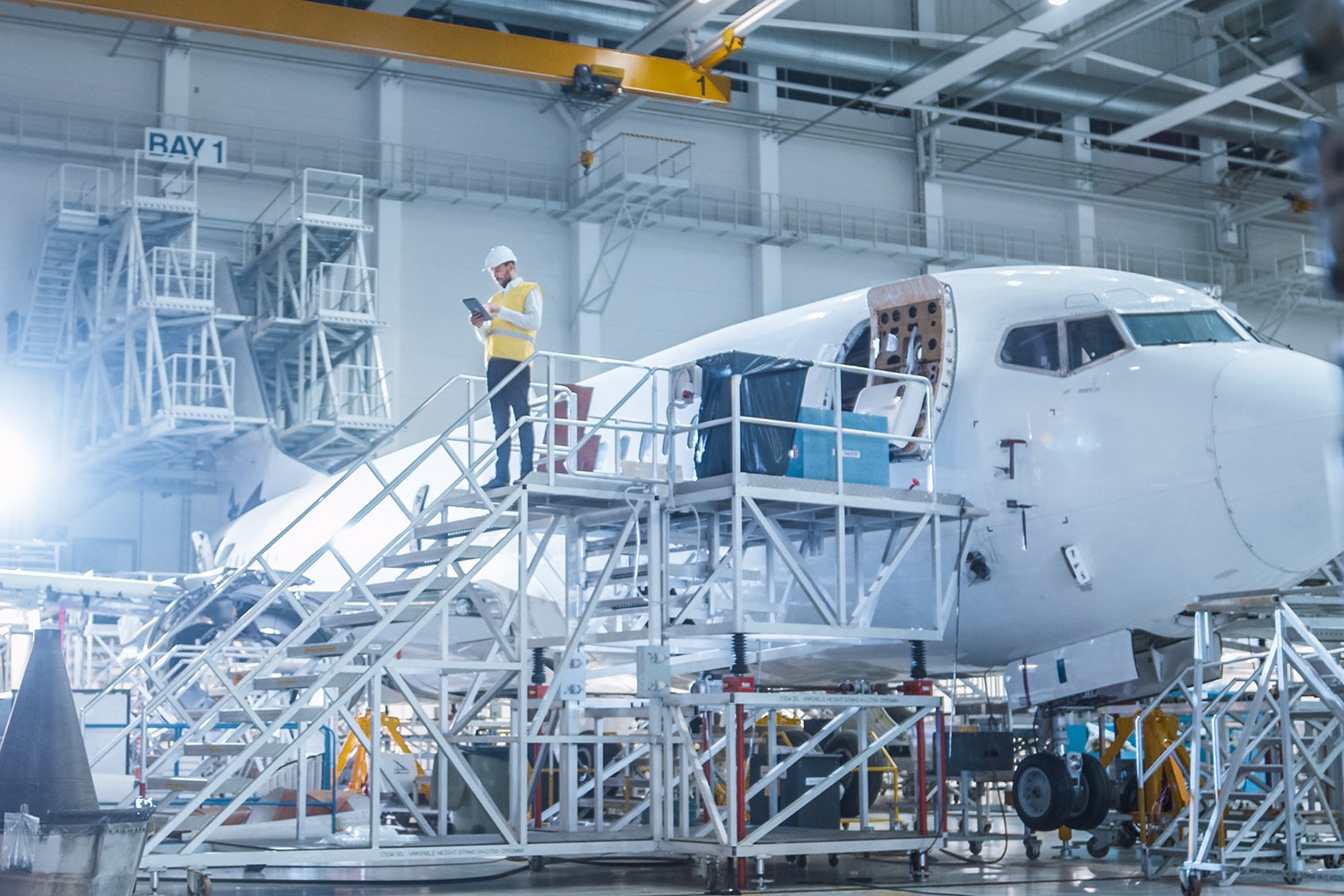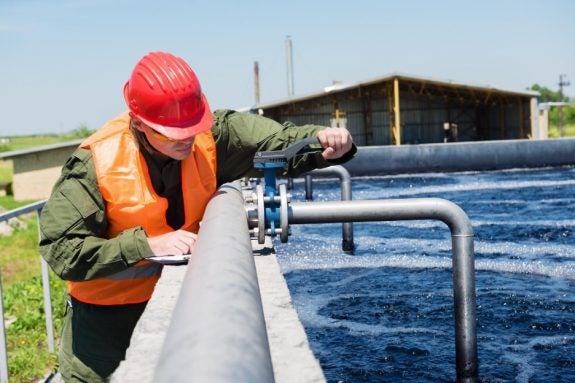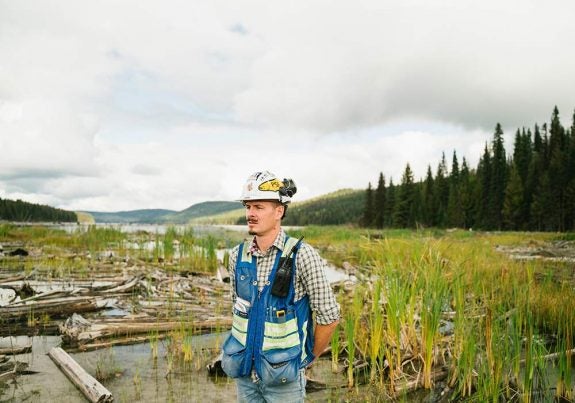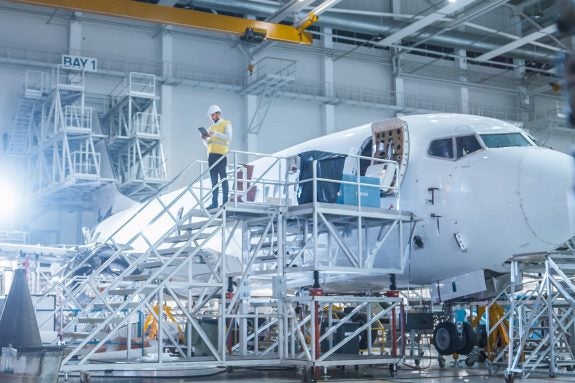Aerospace Engineering Job Outlook in the United States and Abroad

After years of research and development in Ohio, Orville and Wilbur Wright took their victorious first flight in Kitty Hawk, North Carolina, in 1903. Ever since, we have increasingly taken to the skies. The International Civil Aviation Organization estimates that airplanes had 4.3 billion passengers in 2018 alone, marking a 6.1% increase from 2017, proving that a significant portion of the world’s population boards an airplane each year.
Aerospace engineering is a relatively new branch of engineering that exclusively focuses on designing and building aircraft and spacecraft. As flight continues to be a popular means of travel, aerospace engineers are becoming more indispensable in industry, government, and small business.
Indeed, commercial spaceflight has become a household conversation piece, with corporate giants such as SpaceX dominating aviation headlines. Soon, space tourism, asteroid mining and private space research may become commonplace, per Interesting Engineering. What’s more, the United Nations Office for Outer Space Affairs (UNOOSA) reports that 4,987 satellites orbited our planet at the beginning of 2019. Aerospace engineers play an important role in designing each of them.
According to the U.S. Bureau of Labor Statistics, the aerospace engineering job outlook is promising, as this is a stable professional field. The BLS projects a 6% increase in the employment of aerospace engineers between 2016 and 2026..
Today, aircraft are being reimagined and redesigned for greater fuel economy, improved emissions, increased production and enhanced security. “To achieve this, manufacturers are implementing lightweight composites in place of metals, and researching batteries and biofuel as alternative sources,” according to Ali P. Gordon, Ph.D., Associate Professor of Mechanical and Aerospace Engineering at the University of Central Florida. Additionally, space travel and exploration is growing in prevalence. Thus, aerospace engineers will continue to be in demand. Here, we unpack emerging trends and challenges in the exciting and fast-changing world of aerospace engineering.
Commercial Aircraft Order Backlog
During the past seven years, the demand for commercial airplanes has exceeded the ability of manufacturers to produce them. As of January 2019, the backlog on commercial aircraft remained at an all-time high of 14,000 planes, as reported by Engineering.com.
Adding to the complications of meeting commercial aircraft-supply demands were troubles for major manufacturer Boeing. On the heels of a record-breaking 2018 output, Boeing’s 737 Max model was the cause of one deadly crash in Indonesia in 2018 and one in Ethiopia in 2019. This grounded the model’s fleet around the world, further adding to aircraft shortages.
Despite increased production, the global demand for aircraft continues to expand. In the last quarter of 2018, Boeing reported a record revenue of $28.3 billion and a record operating profit of $4.2 billion driven by increased orders.
The 14,000-plus backorders across aircraft manufacturers are a testament to the need of engineers in this field, the need for improvements that can speed up buildout, and the overall positive aerospace engineering job outlook. To meet the demand for more aerospace engineers, UCF is introducing a new aerospace program to its curriculum.
Aircraft Production Challenges
The record volume of aircraft sales has given way to production challenges for manufacturers such as Boeing and Airbus. Low interest rates, growing demand domestically and abroad, and more readily available financing have all led to a need for increased aircraft production.
This uptick has created demand at every level of the supply chain, from small parts to finishing touches. Increasingly, manufacturers have had to push for greater visibility and efficiency across the entire chain, addressing weak links when necessary to boost productivity.
Growing pains related to increased demand, challenges in aircraft production and backorders among major airplane manufacturers have also created tremendous opportunity for new players to enter the game. In recent years, Avionics International reports, regional jet makers and international manufacturers have grown apace with demand for well-made, safe aircraft. Indeed, a number of new makers are emerging in countries such as China and Russia, offering competition to production giants Airbus and Boeing.
Demand for Greater Fuel Efficiency
In 2018, jet fuel prices skyrocketed, but so did international travel. To keep profit margins high, aircraft manufacturers have begun to implement new and rigorous standards to improve fuel efficiency, according to Reuters and Forbes. The positive effects of more fuel-efficient commercial airlines are myriad, including reducing the environmental impact and keeping the cost of flights relatively low.
Recently, more aerospace engineers have devoted their time to developing technologies that can improve fuel efficiency for aircraft of all types, whether their design is intended for commercial, private or defense-industry use. This pivot has created positive ripples for the job outlook in aerospace engineering, as manufacturers bring on visionary engineers to improve travel with real-time data and other optimization tools.
Global Instability Affects the Aerospace Sector
Broad regulations impact the airline industry due to a wide range of issues, including international trade, tax policy, competition, war, terrorism and even disease outbreak. The multitude of political developments in our interconnected world can send ripples throughout the defense and aviation industries, presenting challenges to aerospace engineers.
Almost all airlines have a global footprint, save for a few strictly domestic companies. This means they are subject to international laws and complex geopolitical circumstances that can shift quickly. Tenuous trade relations between the U.S. and China have impacted aerospace in recent years, contributing to a growing instability in markets the world over, according to Gulf News. In addition, trade sanctions and conflict in some regions of the world have slowed down aerospace growth. These are just a few of the political circumstances that are of concern to the industry.
While global instability has certainly inhibited the growth of some aspects of the aerospace industry, it has simultaneously given rise to the development of new technologies and innovations that meet evolving global standards.
The Impact of Cyberwarfare and Security on Aviation
Cybersecurity is a real concern — and not just for individuals, banks and big business. It is also a top priority of government satellite operations, airline businesses, space flight companies and defense infrastructures, per Engineering.com. Many aerospace operations rely on software, for example, and must protect themselves from cyberattacks to maintain the integrity of mechanical design, flight paths and internal communications.
On any given day, the Federal Aviation Administration serves more than 43,000 flights, and each airplane relies on complex software and many networks to navigate takeoff and landing, and communicate with staff on the ground. Without proper security, consumer data and the safety of passengers and crew could be vulnerable to cybercrime around the world. In addition, military and defense operations rely on aerospace technologies to monitor troops, detect threats and communicate safely, making advanced protection from cyberthreats extremely important. Cybersecurity is a growing consideration for aerospace professionals. Engineers and security experts get ahead of threats through cloud-based security, enhanced GPS programming, and even incorporating artificial intelligence to anticipate issues before they arise.
The aerospace engineering job outlook is favorable to those with the digital savvy and coding skills to enhance cybersecurity — not only within commercial aviation but also among other technologies, such as the satellites that deliver GPS and other technologies to our smartphones.
Assessing Job Opportunities in Aerospace Engineering
There are a wealth of job opportunities within the evolving field of aerospace engineering, which has plenty of momentum behind it thanks to a booming commercial air transport industry, the popularity of technologies that rely on satellite technology, and the consistent needs of the U.S. defense and travel industries.
With a continued demand across the production supply chain for aircraft manufacturing, as well as increased military spending with an emphasis on cybersecurity within aerospace technologies, there are abundant career opportunities in the field. As technologies advance and the world becomes more globalized, the aerospace engineering job outlook in the U.S. — and even internationally — will remain promising.
Learn More About Boosting Your Aerospace Engineering Career
When you look toward the sky, you can see the limitlessness of your aerospace engineering career. UCF Online offers graduate degrees in the field, such as the online Master of Science in Aerospace Engineering. Within this program, students build upon their undergraduate education and job experience by studying advanced space and thermofluid aerodynamics systems design.
Learn more about UCF Online and apply today to earn your degree and advance your career from anywhere in the world.
UCF’s Online Engineering Degrees
- Aerospace Engineering, MSAE
- Applied Photonics
- Civil Engineering, MS (Smart Cities)
- Civil Engineering, MS (Structural)
- Civil Engineering, MS (Transportation)
- Civil Engineering, MS (Water Resources)
- Civil Engineering, MSCE
- Data Analytics
- Electronic Parts Engineering
- Engineering Management, MS
- Environmental Engineering, MS & MSVE
- FinTech, MS
- Guidance Control and Dynamics
- Healthcare Systems Engineering Certificate
- Healthcare Systems Engineering, MS
- Industrial Engineering, MS
- Industrial Engineering, MSIE
- Interdisciplinary Studies, BA/BS
- Materials Science and Engineering, MSMSE
- Mechanical Engineering, MSME
- Modeling and Simulation of Behavioral Cybersecurity
- Modeling and Simulation, MS
- Optical Image Systems
- Optics and Photonics, MS
- Project Engineering
- Quality Assurance
- Systems Engineering
- Systems Engineering, MSSE
- Travel Technology and Analytics, MS







